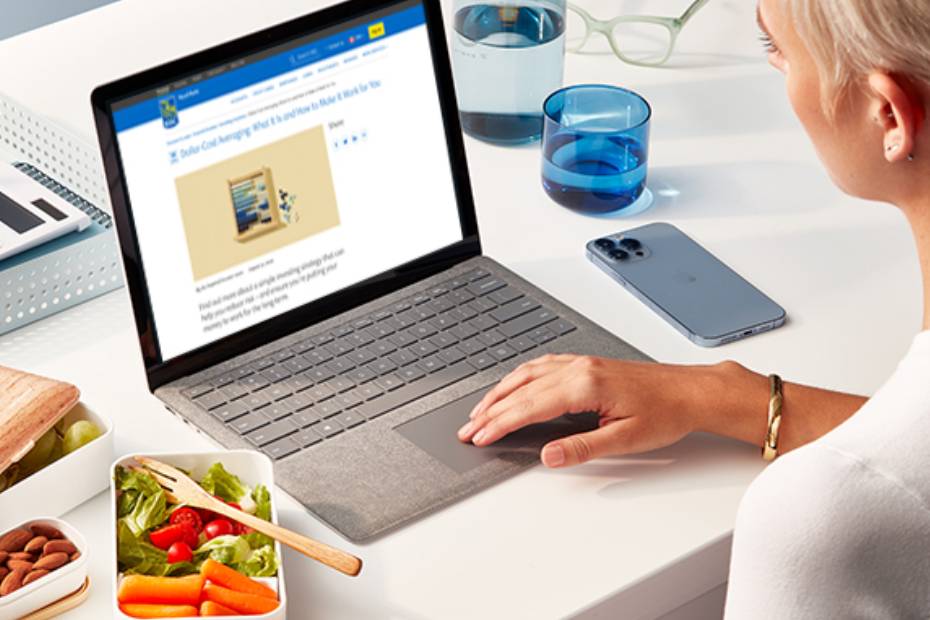Published December 22, 2022 • 4 Min Read
After more than two years of remote work, many employees are back to the office—and it’s safe to say that there are some mixed feelings about it. For many, leaving the home office behind and reconnecting with colleagues in person is a welcome change, but for others the return means additional expenses at a time when the cost of living continues to creep up due to inflation. Working from home at least part-time translated to major savings for many Canadians as a result of skipping commuting, lunches, post-work cocktails, and other costs.
But there are ways to keep expenses down while adapting to the new (old) normal. Here are some tips from two budget-savvy experts.
Consider any new circumstances
As eager as many of us are to put the pandemic behind us, circumstances have often changed—and that’s something to consider as you navigate a busy lifestyle and rising costs. Kelley Keehn, a financial educator and author, recommends avoiding an auto-pilot-like state, where you simply go back to your old habits. If you’re only back to the office two days a week, do you really need a transit pass? Does paying for a parking pass downtown make sense once you factor in today’s gas prices? Be mindful as you move forward. “These are big questions for people to ask and you have to do the analysis to figure out what makes sense for your budget,” says Keehn.
Tinker with your daily commute
Commuting can be one of the least favourite—and priciest—aspects of working outside the home. Millennial money expert Sandy Yong recommends stacking errands—daycare pickup, gym, buying groceries—on the trips to and from work so you’re not making multiple trips and, if driving, burning extra gas. She also suggests carpooling with colleagues, if possible. “This is great if you live in the same area and have a long commute.”
Cut workplace food expenses
Being back in the office might seem like a reason to embrace maximum convenience—but the cost of buying coffee, lunch and snacks can quickly creep up. It’s most cost-effective to make your own lunch, but you don’t have to do it the night before. Keep some snacks at your desk and groceries in the office fridge so you can assemble à la minute. Yong suggests taking advantage of any food and beverages offered by your employer—whether that’s drip coffee or catered lunches. And consider a group order through a meal delivery app for lunch or if you’re working late; you can save by splitting, including on delivery costs.
Slim down your socializing
Workplace solidarity and team building is one of the benefits of in-office work cited by many employers—which often means socializing beyond your cubicle. This is an important (and fun!) part of working life for many people, and Yong says there are ways to do this cost effectively. She recommends taking advantage of happy hour specials, hosting potlucks instead of ordering in, and suggesting activities (e.g., board game nights, sports leagues, trivia contests, etc.) that can be less pricey than a fancy restaurant meal with drinks.
Look for the hidden costs
Working at the office likely means less control and flexibility when it comes to your daily schedule—and that can add some expenses that might not be immediately clear. Maybe you need someone to walk your dog, or perhaps you must enroll your kid(s) in an aftercare program. Keehn advises taking a holistic view of your potential expenses and take note of places where you can shave them down even as you’re tempted to maximize convenience. “Look at a meal prep kit instead of eating out,” she says. It’s not as inexpensive as cooking, she says, but it can make life easier and save you money versus restaurant meals.
Re-evaluate your wardrobe
The idea of trading in a perma-uniform of sweatpants for business casual clothing that, after more than two years, may or may not still fit, is exciting for some, but less appealing to others. Yong suggests evaluating your wardrobe before making any knee-jerk purchases; you might already have more than enough options in your closet. If you do need to buy additional items, she suggests buying well-made classics, ideally on sale. “It’s always good to have staple items that will look good for many seasons,” she says. Waiting for a sale is also an option, but Yong adds that some retail stores offer discounts to certain big employers. And keep an eye on labels; avoid items that require pricey dry cleaning.
This article is intended as general information only and is not to be relied upon as constituting legal, financial or other professional advice. A professional advisor should be consulted regarding your specific situation. Information presented is believed to be factual and up-to-date but we do not guarantee its accuracy and it should not be regarded as a complete analysis of the subjects discussed. All expressions of opinion reflect the judgment of the authors as of the date of publication and are subject to change. No endorsement of any third parties or their advice, opinions, information, products or services is expressly given or implied by Royal Bank of Canada or any of its affiliates.
Share This Article






